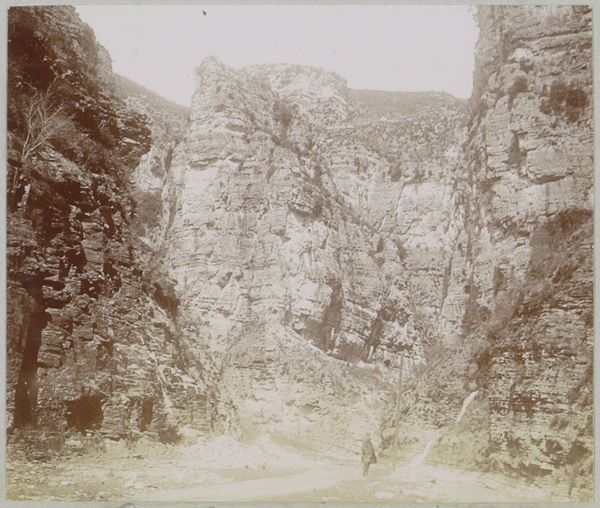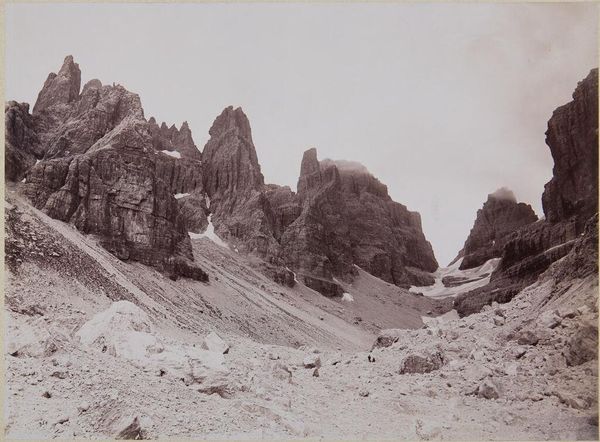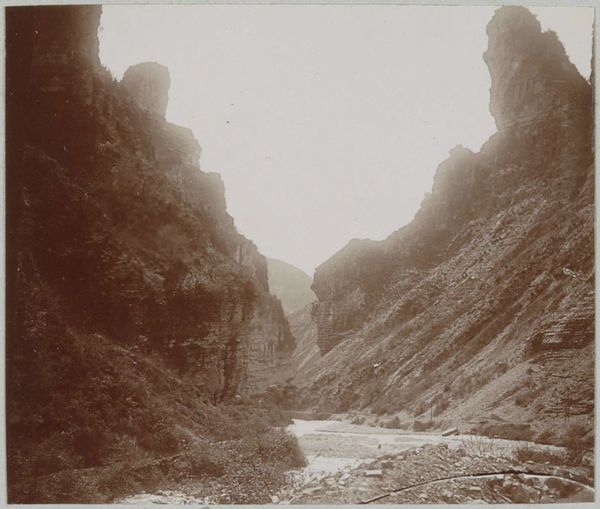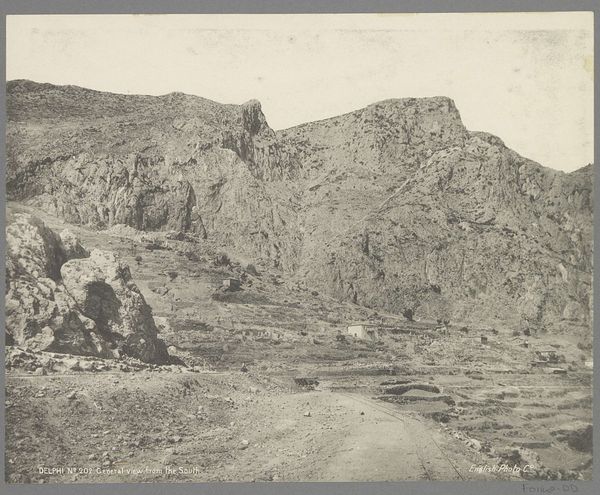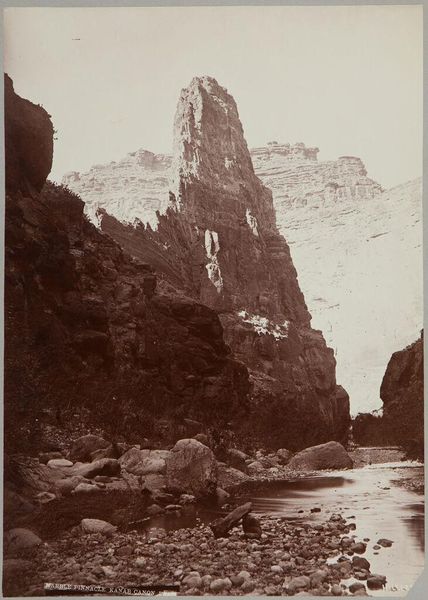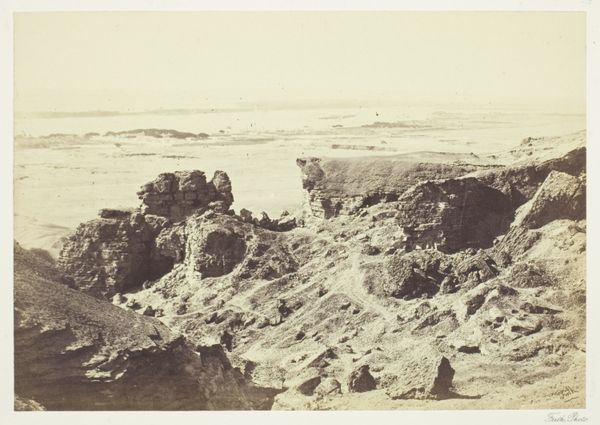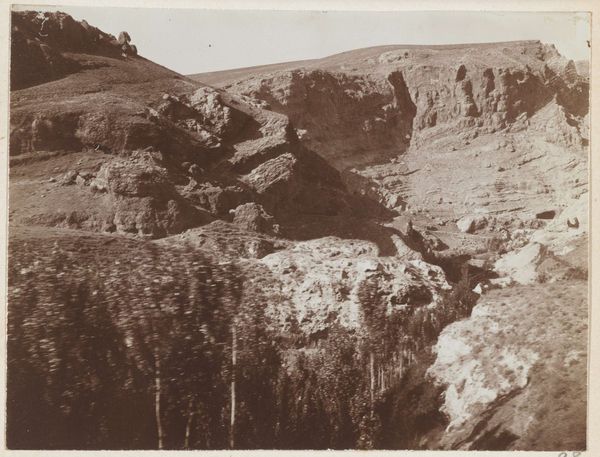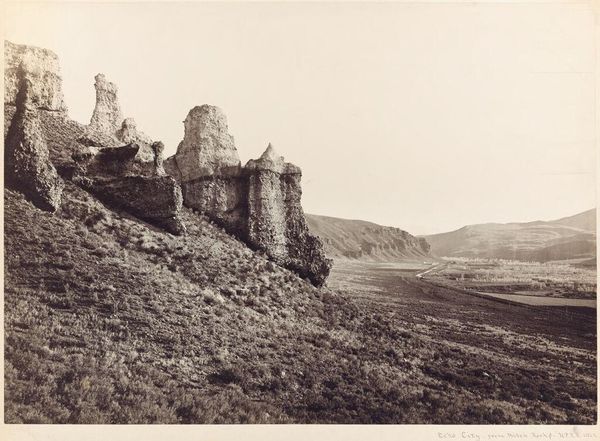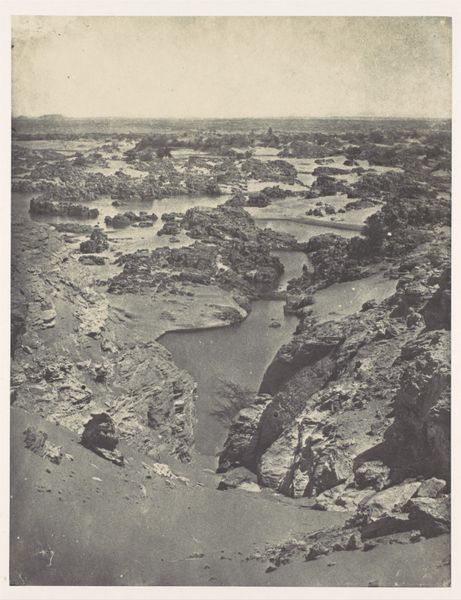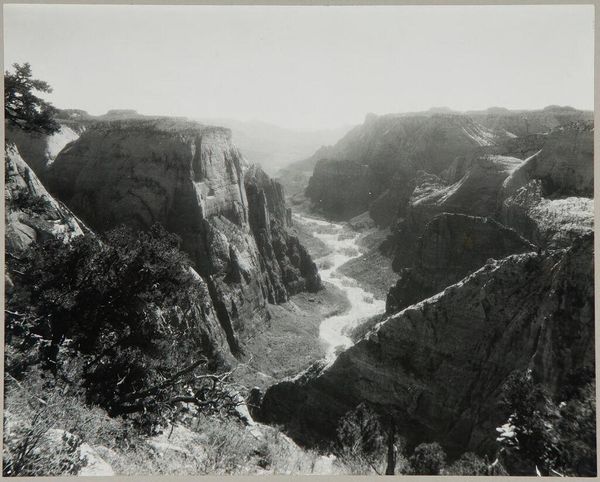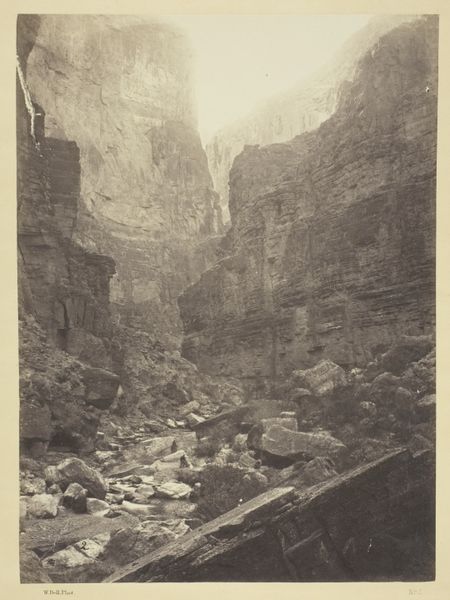
Dimensions: image: 19.1 x 24 cm (7 1/2 x 9 7/16 in.) mount: 35.5 x 43 cm (14 x 16 15/16 in.)
Copyright: CC0 1.0
Editor: Here we have John K. Hillers's "Hurricane Fault, Utah." It's a striking photograph, almost monumental in its starkness. I'm curious, what stands out to you about this image? Curator: Look closely at the way Hillers uses the wet collodion process. Notice the detail captured in the rock formations. This process, involving coating a glass plate with chemicals, speaks volumes about the labor invested and the relationship between early photography and geological surveys of the American West. Editor: So, you're saying the photographic technique itself is crucial to understanding the image? Curator: Absolutely. Consider the materiality of photography at this time and its role in shaping our understanding of landscape, resources, and even colonial expansion. How does documenting a "fault" serve specific social and economic interests? Editor: I see. It makes me think about how the image served a purpose beyond just aesthetics. Curator: Precisely. By examining the processes and contexts of production, we move beyond a simple appreciation of the image and begin to understand its broader cultural impact.
Comments
No comments
Be the first to comment and join the conversation on the ultimate creative platform.
